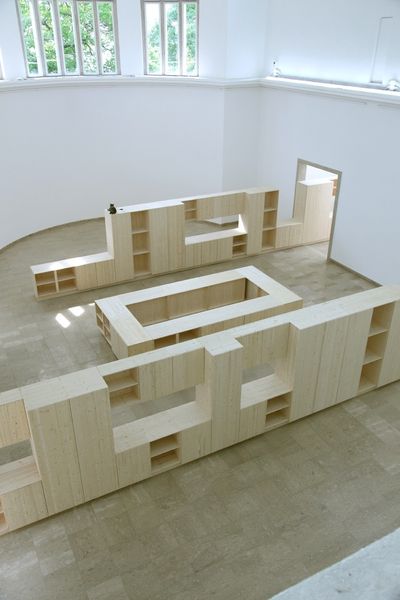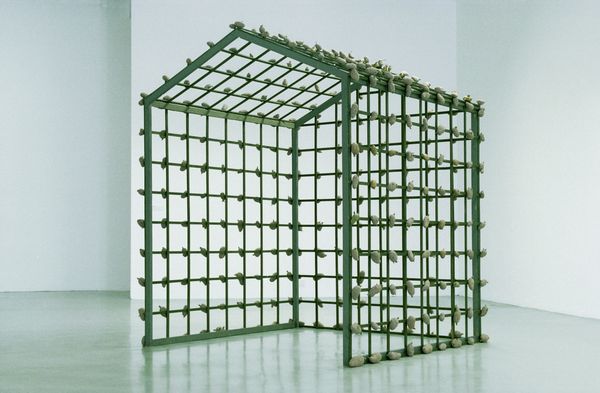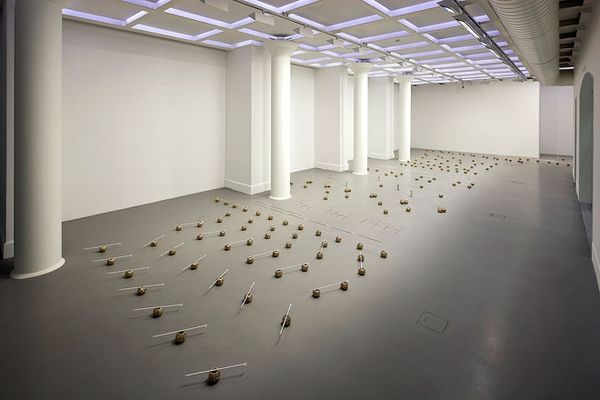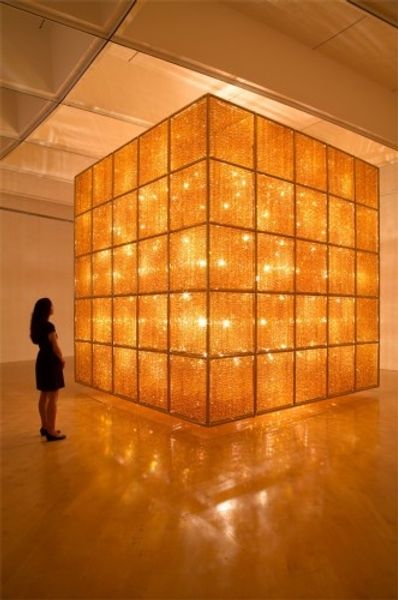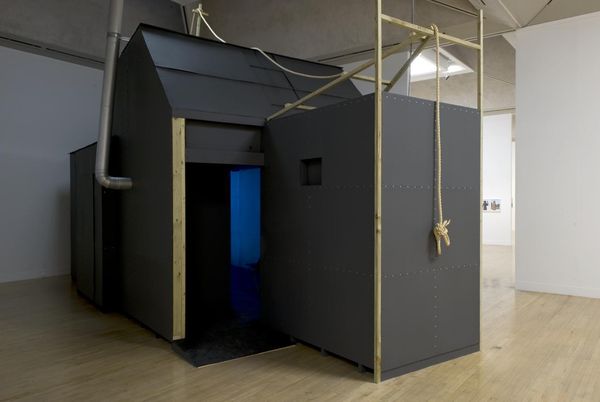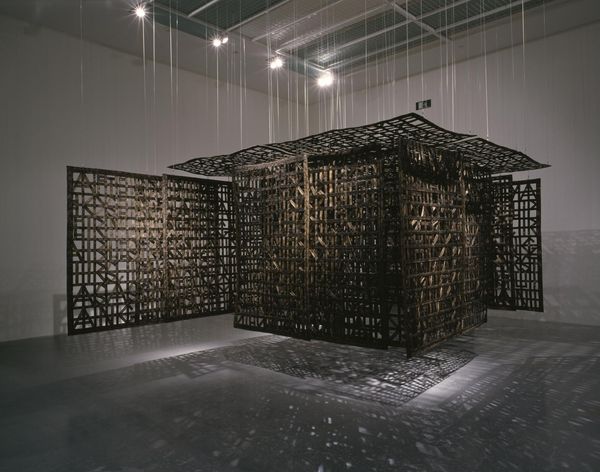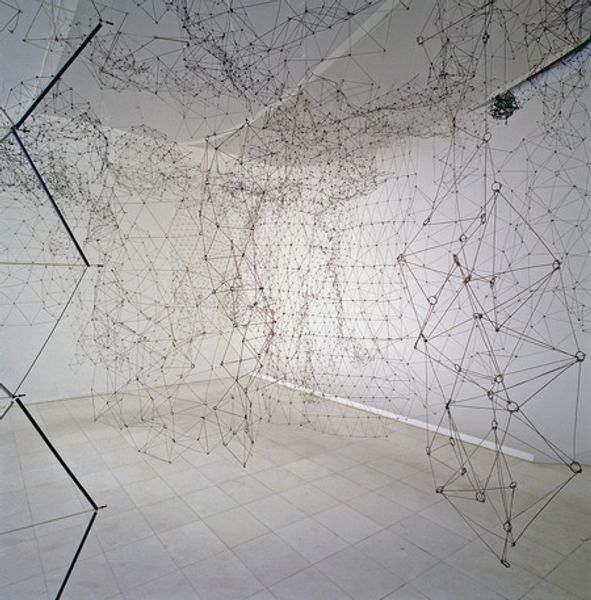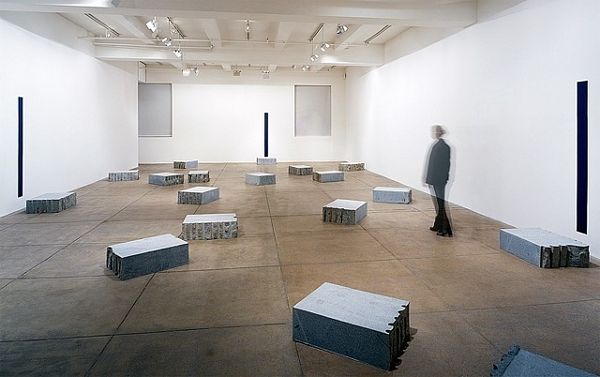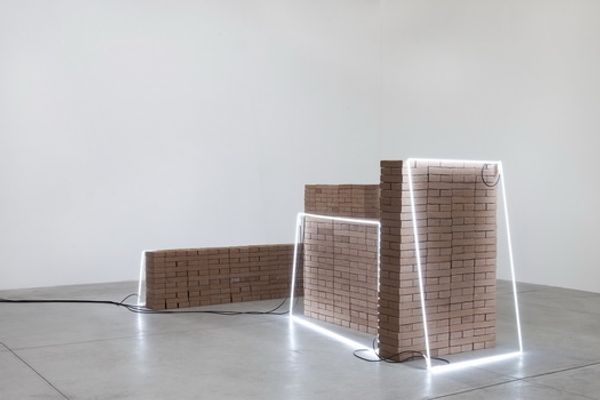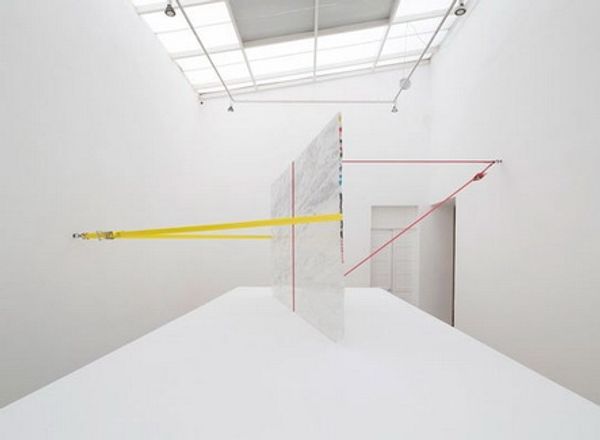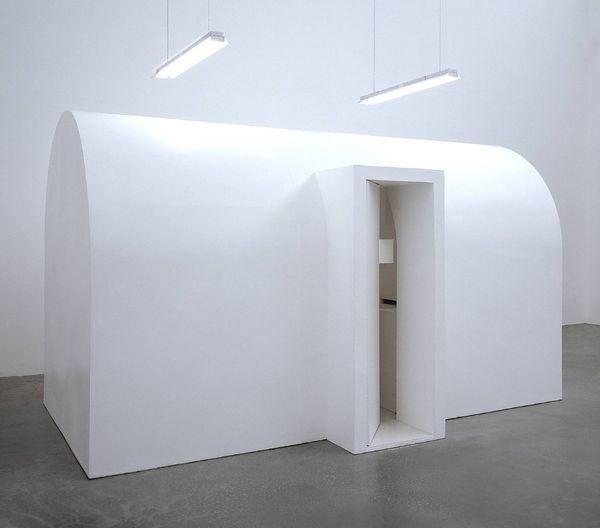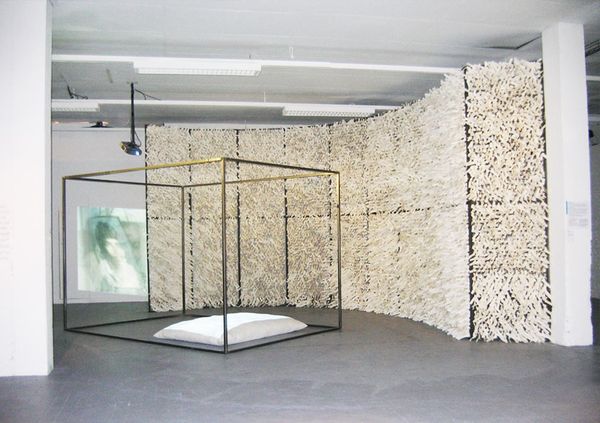
mixed-media, sculpture, installation-art
#
mixed-media
#
contemporary
#
geometric
#
sculpture
#
installation-art
Copyright: Kishio Suga,Fair Use
Editor: Kishio Suga’s "Emptied Space," created in 2012, is a mixed-media installation that's primarily a sculpture. I'm struck by how the geometric cage-like form seems both solid and permeable, but what is its meaning? How do you interpret this work, especially in the context of contemporary art? Curator: "Emptied Space" powerfully engages with ideas of spatial relationships, influenced by the philosophical concerns of Mono-ha, the art movement Suga participated in during the late 1960s and 70s. Mono-ha artists were interested in the encounter between natural and industrial materials and explored how these materials could exist in a state of interdependency. Here, the industrial grid suggests boundaries, systems, even power structures, while the internal voids offer the potential for freedom, resistance, or even, echoing Foucault, the creation of new spaces of possibility outside the dominating grid. How does that strike you? Editor: So it's about challenging existing structures and creating alternatives within the framework, sort of like hacking the system? Curator: Precisely. We could even consider this in terms of performativity and space—what does it mean to move around and within the artwork? To have your movement shaped or directed by that grid, and to experience the surrounding exhibition space in a completely different way? Does it suggest anything about movement or freedom? Editor: I see, by creating a defined void, the artwork redefines the space around it. Thanks for bringing that theoretical context to life. I now consider my embodied experience within the gallery. Curator: And considering how the physical and the theoretical meet, through your own moving body, to become something different than its original intention. It highlights the ongoing evolution of the dialogue around identity, space and freedom within contemporary theory.
Comments
No comments
Be the first to comment and join the conversation on the ultimate creative platform.
